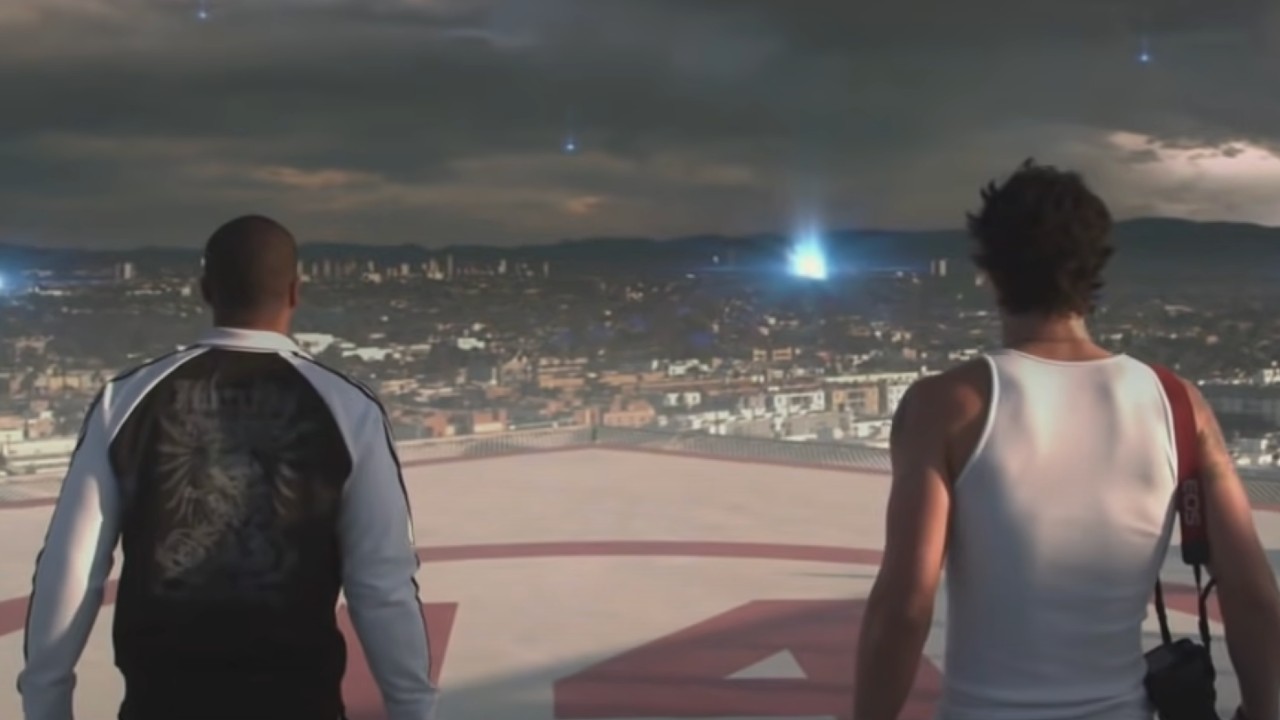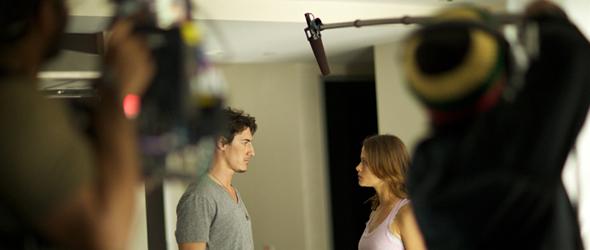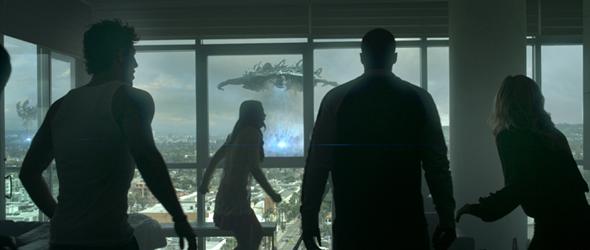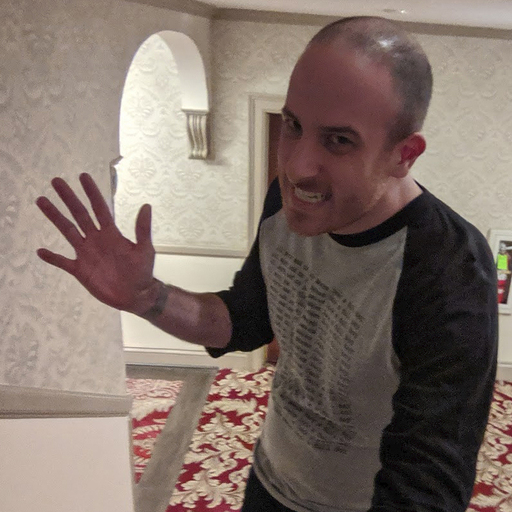Interview: Skyline Directors Greg And Colin Strause

While making the film Alien vs. Predator: Requiem, directors Greg and Colin Strause, better known as the Brothers Strause, were constantly bowing to studio demands, restrictions and rules. As anyone who saw the final product can testify, the result was a mess that did no credit to either franchise it was affiliated with. For Skyline, however, an independently financed alien invasion film, they were able to skip all of the bureaucracy and simply make the movie that they wanted to make.
Invited to their effects workshop, Hydraulx, in Los Angeles, I had the chance to speak with the two brothers about the difficulties getting such a large concept into a smaller box, the benefits of making a film in a place you are entirely familiar with and some of what we can expect when Skyline 2 goes into production next year.
If and when the production budget is announced, how surprised will people be?
Colin Strause: They won’t believe it.
Greg Strause: Nobody will ever believe the number. It’s also how do you really come up with the number? We literally worked for $8 an hour, that’s DGA minimum on the ultra-low-budget scale. So that’s $16 an hour there, we own the lenses, the master prime lenses, those are $50,000?
CS: More like $30,000
GS: We own the lens, but we’re not charging rentals. The production budget is kind of funny money on some level because we own all the stuff. We own all of the lights, we own everything, so it’s not being rented.
Your Daily Blend of Entertainment News
CS: My biggest worry going into this was, even if you did it on a small scale, it’s a lot of work. Movies are a ton of work and I didn’t want the movie to look small. It would really suck if after we did all of this, whether we did it for $500,000 or $20 million, someone goes, “Oh, that movie looks really small.” That’s totally depressing. We’ve always had that sort-of phobia that we’re dealing with. Because movies – you shoot them out of order and there’s all these missing pieces, so it’s not until late in the game where you can sit back and watch the whole thing calmly and go, “Oh, shit. It’s kind of big.” And then you go, “Oh Jesus, how are we going to finish the whole thing?” I feel pretty good now saying nobody would be able to pull off this project.
A lot of that was based on the philosophy of ownership, using things that we own. The whole rental idea behind the way movies work is crazy. You end up owning the stuff in three months at the price they charge for rentals and they rent it for six. Pay double? What? We’re always trying to fight, when you’re on a studio movie, to get the dollars up on screen. There’s all the things we wanted on the last movie and there was this constant battle. You’re fighting these guys whose whole job is to tell you no. They’re not there to say “yes” to everything. They actually have a corporate mentality to put a cage around you because you’re this crazy creative fucking guy who is really dangerous to the studios. So they’re there to box you in in every way. They’re whole job is “No, no, no, no, no.” They wear you down, even if it’s two stubborn guys. They will wear you down, and eventually that hurts what goes up on screen. It’s a story that gets repeated over and over and over again. We just wanted to wipe that out. We couldn’t stand having that happen again. The whole attitude changed to “We can doing anything, we can do it.” We’re just going to go figure that out.
We had this stunt rigging thing where we were like, “Oh my God, how are we going to figure this out? How are we going to do that? How are we going to afford that?” And our production manager talked, Kristian [James Andresen] talked. Next thing you know, the rigging guy from Spider-Man 2 is bringing in this aluminum truss system and roll-around carts to set it all up our helipad. So we’re doing the stunt in-camera on the top of the building.

GS: Eighteen stories in the air.
CS: Absolutely certified, absolutely by the book. I know [Eric] Balfour made those funny comments at Comic Con. This was top-notch, professional guys.
GS: They wanted to do it for fun, it wasn’t a money job.
CS: It was perfectly professional and safe and everything. Actually, the best technical way to shoot the scene – we were just sitting back later going, “This is so cool. This is the way to do it,” and some guys were looking at us like we’re nuts and this was actually the best way and it worked out.
GS: What we shot in a half day would have been a three or four day set job. That’s kind of the story of the movie – be innovative. Wherever there was a wall we would always try to use it. If there was no brute force way around it, there was a technology way as well.
You guys are coming from a visual effects background, so when you’re directing, how do you make the actors comfortable when acting against CG characters and act in the element?
GS: Well, one of the advantages we had were really good [previsualization] of all of the sequences. So we were literally able to go like, “Here is the entire scene edited, sound-designed and with music. This is what we’re trying to achieve.” And you’d watch and say, “Oh, I know exactly where my eye-line is.” We had surveyed out the whole building. so when we did all the [previsualization], and we had all of the models, billions of Google Maps from top view, architectural blueprints… we literally built out a digital version of the building so absolutely every camera angle in the [previsualization] was right on.
Sometimes we’d just be their like, “Roar, I’m the monster!...and tentacle.” We would have to call it out, we’d have to call out the beats. “Footsteps, tentacle, roar!”
CS: If you guys hear the original audio it’s so…it’s DVD material [laughs]. We also had, for one of the scenes where Eric literally beats up one of the creatures, we had a guy in the full pads, we saw some of that inside. Literally his knuckles started bleeding. And so we would also add things, like we would add these big q-tip things for the guys swinging axes and stuff.
GS: The traditional in-camera, old school tricks when you can. Hope the axe doesn’t fly off the edge off the edge of the building like it did one day. One of the scariest days of my life.

Did you guys have any of those “happy coincidences” that you often hear about on movie sets?
GS: We had the happiest weather.
CS: The weather was a great happy accident. When we wanted clear blue skies when we were outside for a week, the weather was perfect and the day we finished it then turned foggy which was perfect for these scenes where we didn’t want to see what was going on and build mystery. So that was a great happy accident.
GS: Certain parts of the building, the lighting, like in the parking garage had a very cinematic feel to it. So we didn’t have to do lighting. Nothing’s better than a location that’s pre-lit. That just saves so much time, like on AVP:R you have a pre-rigging crew that goes in days ahead and they lay all the cable and they put all the lights in and we just didn’t have that within our means. We didn’t have the money. So to not need that we were able to set up really quick. We had no compromise on the number of angles of takes or any of that kind of stuff. It felt, when we were shooting it, from that stand-point, of “Let’s do another take” that we had all of the resources in the world.
With creature design, how did you come up with how you wanted the aliens to look?
GS: Amalgamated Dynamics did a lot of the big picture design, we had a great relationship with Tom [Woodruff Jr.] and Alec [Gillis] over there. Tom Woodruff was actually the performer in the Alien suit. Those guys are fantastic designers. And they’re all about this indie movement as well. They’re big supporters of it. So we went to those guys, talked about the different aspects of the different creatures. So they did the big ones and a couple of the smaller ones were done by Kino Scialabba. He did the drone, the hydra and the ships in house. Those two teams represented all of the design efforts.
The idea was to we’ve seen metal ships, we didn’t want to do metal ships. So we went for a more organic, single-celled organism. Each one should be unique, asymmetrical. These were characteristics of mitochondria, and other little things from nature, microscopic microbes that we were drawing references from. We thought it was cool if you were to shoot one of these ships that it would heal over and maybe it would have a scar. That was the original seed of the idea. Maybe their blood vessels pumping fluid through the ship.
CS: We told them to go nuts. We’ve seen how those guys will do a thousand designs.
GS: “That was the original, now it’s morphed into an interesting crystalline tissue” or something like that. We could draw a reference to anything we saw recently, nothing comes to mind.
CS: Jellyfish with a sort-of moray eel or stingrays silvery skin. So you look at all of the creatures from the front it kind of looks solid, but on the glancing angles it always goes transparent. No matter where you look there’s always this little energy thing moving through it. We literally told Tom and Alec to go nuts with the designs. Normally they’ll go through 500 designs and it was just hard to ever get them through. Usually your first five or six are fucking awesome and then the next forty just get worse and worse because they’re getting affected by outside forces. So we’re just like “Go nuts.” And they literally sent over twelve designs and I think it was their third one they did that we ultimately picked for the big creature.
GS: Usually when you get to Take 60, you’re grasping at straws. You’re dealing with people’s input that don’t have a very structured idea process and they’re kind of looking at shit on their Blackberries taking notes.
CS: Make it 20% more mysterious.
GS: There was a lot more purity to the design process. Not to say there weren’t days where we scratched our heads and said, “I don’t know.” That happens on everything.

You’d actually hear 20% less of something?
CS: Oh my God, it’s retarded.
GS: We got one last week: “Make it brighter and then silhouette it” [laughs]. “Add a lot of blue and then warm it up.” You would not believe. $130 million movie. “Make it really matte, but then it needs to be reflective.” Those are opposite! Make it really dry and then wet it? What are you talking about? Too many cooks in the kitchen. I don’t go into the kitchen and tell the cook recipes. There’s a reason why you go someplace, let them do their jobs.
CS: We had a big fight that almost got through. They thought the predalien wasn’t actually an alien, it was something else so it should pick up the cloaking thing and a spear and start hunting aliens. We were five weeks off from shooting and that was one of the neat ideas they had. That’s the shit you deal with. And then, to get back from that, you end up in another place that you don’t want to be, but at least it wasn’t that. So it was a compromise. Some are worse than others.
The writers mentioned that the treatment is ready for the sequel. Are you planning to shoot next year then?
CS: Oh yeah. We’re going to get right into it.
Is there anyone interesting that you are thinking about adding to the cast?
CS: The ending [of Skyline] is very interesting, so I don’t want to…
But will there be new people that will be brought in?
Both: Oh yeah.
Is there anyone you have in mind that’s kind of a dream casting?
CS: We’ve met someone already but we’re just trying to keep it…I think the cloaked in mystery thing worked really well for us, we started to blow that today, but I’d like to not blow it on the next movie yet.
For full coverage of the Skyline Preview, click here to see my recaps, interviews and more!

Eric Eisenberg is the Assistant Managing Editor at CinemaBlend. After graduating Boston University and earning a bachelor’s degree in journalism, he took a part-time job as a staff writer for CinemaBlend, and after six months was offered the opportunity to move to Los Angeles and take on a newly created West Coast Editor position. Over a decade later, he's continuing to advance his interests and expertise. In addition to conducting filmmaker interviews and contributing to the news and feature content of the site, Eric also oversees the Movie Reviews section, writes the the weekend box office report (published Sundays), and is the site's resident Stephen King expert. He has two King-related columns.
